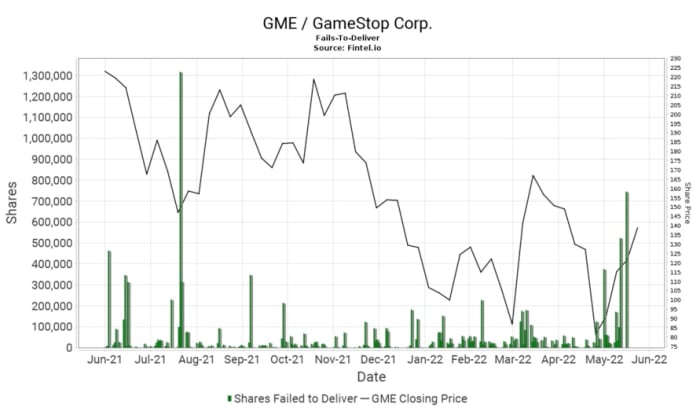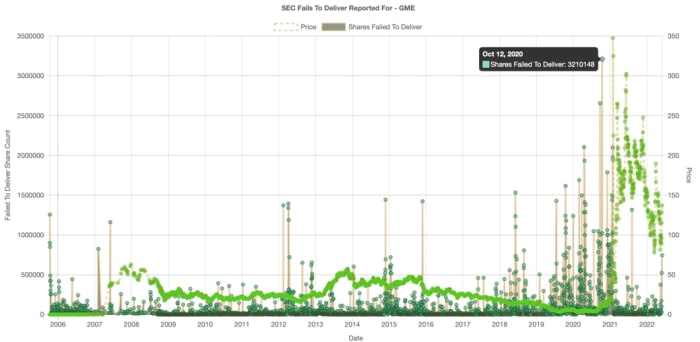Every other week, the U.S Securities and Exchange Commission (SEC) releases data on equity securities’ failures to deliver (FTDs). This metric is closely watched by investors looking for stocks with high short interest.
The data for the second half of May shows significant numbers of FTDs in GameStop‘s (GME) – Get GameStop Corporation Report stock.
Let’s take a deeper look into what that could mean for GME shareholders.
(Read more from Wall Street Memes: This Could Be a Bad Time to Bet Against AMC. Here’s Why)
What Is Failure to Deliver?
Failure to deliver (FTD) in trading occurs when one party fails to fulfill its obligation at the settlement date. On the buyer’s side, this means failure to get the money to proceed with the order. On the seller’s side, it implies that they no longer have the equity — be it a stock, option, etc. — to be sold.
The FTD metric is closely associated with naked short selling, which has been illegal since the financial crisis in 2008. Considered predatory, naked shorting involves short-selling an equity without necessarily owning that equity.
This practice generates so-called “phantom shares” that don’t exist, potentially harming the liquidity of a shorted asset and diluting its share price.
GME’s Latest Failure-to-Deliver Data
The SEC’s latest fail-to-deliver data for GME revealed that, in May, there were 2,399,873 FTDs of GME shares registered — the highest number of FTDs since August 2021. See the chart below:
As the SEC itself has said, this failure-to-deliver process has a technicality. If an FTD position resulting from the sale of a security is owned by a person who intends to deliver as soon as the delivery restrictions are removed, there is a 35-calendar-day period following the trading day to close out the FTD position by purchasing non-delivered securities.
Then, after these 35 days, it is possible to notice a significant upward movement in certain stocks through these purchased non-delivered securities — especially those that suffer from increased short-selling activity, like GameStop.
However, this reaches a certain relevance only when there are sudden spikes in FTDs, usually above or close to 1 million. To give you an idea, in the months leading up to GameStop’s frenzied trading activity in January 2021, GME FTD data reached 3,210,148 on a single trading day in October 2020.
Current numbers are much more modest than those of late 2020 and early 2021. But GameStop FTDs reached 523,209 and 744,847, respectively, on the last two trading days of May, similar levels to the short squeezes that occurred in 2021.
The Bottom Line
Failure-to-deliver data is an indicator that is closely watched by GME traders, retail investors, and shareholders. The huge community of GME supporters on social media believes that GameStop has been victimized by massive predatory short selling, such as through naked shorting practices.
When considerable increases in FTDs occur, evidence of the existence of naked shorts gains momentum. However, although it is not yet possible to substantiate such allegations, there are investigations underway at the Department of Justice, where 30 short-selling firms are being investigated for possible malpractice.
More recently, the SEC has also released plans to bring more transparency to trading practices, such as putting payment-per-order flow under scrutiny and encouraging competition among wholesalers through order-by-order payment. According to the SEC, about 90% of retail investors’ orders fall into the hands of a small percentage of wholesalers.
There is a possibility that the lack of transparency in the current trading structures is disadvantageous to retail investors. After all, they could wind up on the opposite side of a naked short sale with “phantom shares.”
(Disclaimers: this is not investment advice. The author may be long one or more stocks mentioned in this report. Also, the article may contain affiliate links. These partnerships do not influence editorial content. Thanks for supporting Wall Street Memes)





